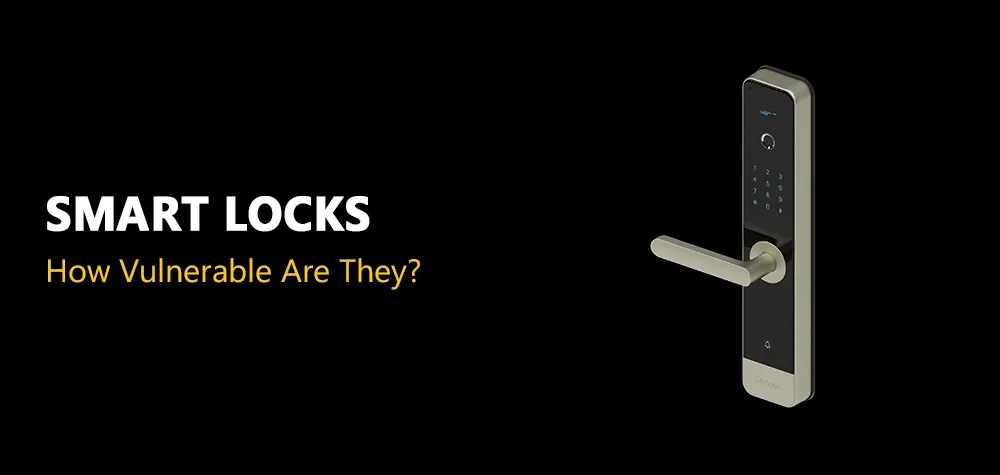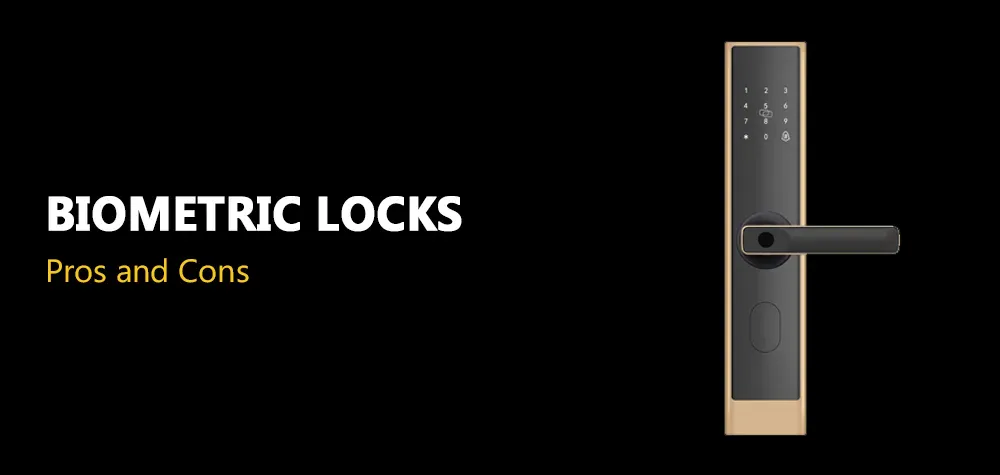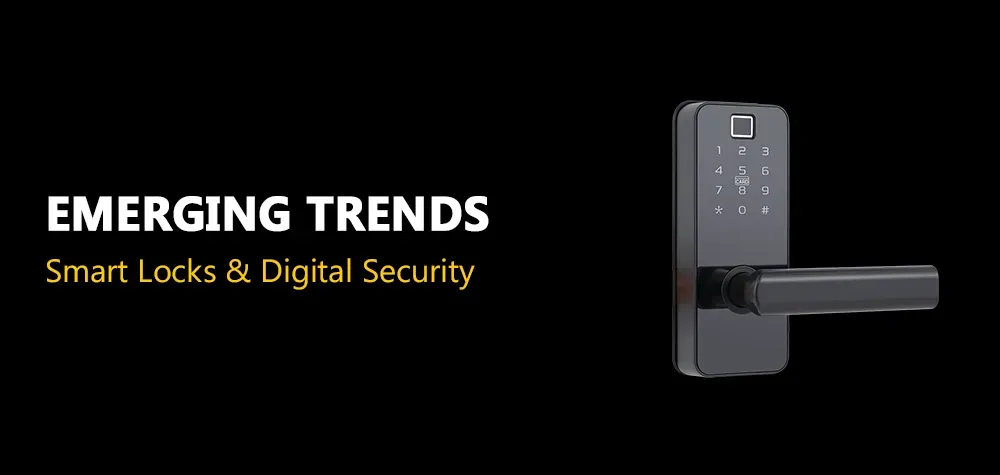How To Open Multiple Locks With The Same Key
Imagine a scenario: you're juggling a dozen different keys, each one meant for a specific lock. One for the front door, another for the garage, and yet another for the office - it's enough to make anyone's head spin. But what if I told you there's a way to streamline this chaos, to simplify your life with just one key? Yes, you heard that right. In this article, we're diving into the world of keyed lock mastery, where opening multiple locks with a single key isn't just a possibility, it's a game-changer.
Gone are the days of fumbling through a cluttered keychain or worrying about misplacing the right key at the wrong time. Whether you're a homeowner seeking convenience or a locksmith honing your craft, join me as we unravel the secrets behind this fascinating skill. It's time to unlock the potential of your keys and unlock a world of ease and efficiency.
Understanding Keyed Lock Systems
Types of Keyed Lock Systems
Pin and Tumbler Locks: Pin and tumbler locks are among the most common types of keyed locks, found in residential and commercial settings alike. They operate on the principle of aligning pins of varying lengths within the lock cylinder to allow rotation of the plug, thereby unlocking the mechanism. When the correct key is inserted, the key's unique pattern lifts the pins to the precise height, creating a shear line and enabling the lock to turn. These locks typically consist of a plug, key pins, driver pins, and springs, with the number of pins varying depending on the security level desired.
Wafer Locks: Wafer locks, also known as wafer tumbler locks, employ flat wafers instead of pins. These wafers are stacked vertically within the lock cylinder and are pushed up and down by the key. When the key is inserted, it lifts the wafers to the correct height, aligning them along the shear line to allow rotation of the plug. Wafer locks are often used in automobiles, cabinets, and low-security applications due to their simplicity and ease of manufacturing.
Read more about Car lock rekey - can i do it by myself?
Disc Detainer Locks: Disc detainer locks are characterized by a series of rotating discs instead of traditional pins or wafers. Each disc contains a notch or gate, and when all the discs are aligned properly, the lock can be turned. The key, which has corresponding cuts or grooves, manipulates the discs to align the gates along a shear line. Disc detainer locks are known for their resistance to picking due to the complexity of manipulating multiple discs simultaneously.
Lever Tumbler Locks: Lever tumbler locks utilize a set of levers instead of pins or wafers. These levers must be lifted to specific heights by the key to align a gate or notch along the bolt's path, allowing it to move freely within the lock mechanism. Lever tumbler locks are often found in high-security applications such as safes and vaults due to their intricate design and resistance to picking and manipulation.
Components of a Lock and Key System
A lock and key system is a marvel of engineering, consisting of several intricate components working in tandem to provide security and access control. Understanding these components is essential for anyone seeking to master the art of opening multiple locks with a single key.
Key Pins: Key pins are small cylindrical pins housed within the lock cylinder. These pins come in varying lengths and are positioned at different heights within the cylinder. When the correct key is inserted into the lock, the grooves or cuts on the key align with the key pins, lifting them to the correct height. Proper alignment of the key pins is crucial as it allows the lock cylinder to rotate freely, unlocking the mechanism. The precise positioning and length of the key pins correspond to the unique pattern of the key, making duplication and manipulation of keys a complex task.
Driver Pins: Driver pins are located above the key pins within the lock cylinder. Unlike key pins, which are static once set, driver pins are spring-loaded and exert downward pressure on the key pins. This pressure ensures that the pins remain in their respective positions and that the shear line is maintained. When the correct key is inserted, the key pins align along the shear line, allowing the driver pins to rest above it. This alignment creates a gap between the plug and the housing, enabling the lock to turn.
Shear Line: The shear line is a critical interface within the lock mechanism where the plug and the housing meet. When all the key pins align along the shear line, it creates a gap between the plug and the housing, allowing the plug to rotate freely. This rotation is essential for unlocking the lock mechanism and granting access. Achieving the correct alignment of the shear line is the primary objective when manipulating a lock, whether through picking, bumping, or impressioning techniques.
Keyway: The keyway is the narrow, often irregularly shaped channel or aperture within the lock cylinder that accommodates the key. It serves as a guide for the key, ensuring proper insertion and alignment. Keyways vary in size, shape, and complexity depending on the type of lock and the level of security desired. Mastering the keyway is crucial for effectively maneuvering the key within the lock cylinder and manipulating the internal components to achieve the desired outcome.

Key Principles of Keyed Lock Manipulation
Mastering the art of keyed lock manipulation requires a deep understanding of fundamental principles and techniques. At its core, lock manipulation involves two key processes: tensioning and picking.
Basic Principles of Lock Picking:
Tensioning: Tensioning, also known as applying torque, is the foundational step in lock picking. It involves the application of rotational force to the lock cylinder using a tension wrench. The tension wrench is inserted into the bottom of the keyway and is used to exert rotational pressure on the plug. This tension creates a binding between the key pins and the driver pins, causing them to seize at the shear line. Proper tensioning is crucial, as it allows the picker to detect subtle feedback cues, such as clicks or slight movement, indicating the binding and setting of pins.
Picking: Picking is the precise manipulation of individual pins within the lock cylinder to achieve the correct alignment along the shear line. Lock picks, typically slender tools with specialized tips, are used to lift and manipulate the key pins one at a time. By applying varying degrees of upward pressure and leveraging the feedback from the tension wrench, the picker meticulously lifts each pin to the correct height. As each pin reaches the shear line, it momentarily binds, allowing the picker to set it into place. This process is repeated for each pin until all are aligned, ultimately enabling the plug to rotate and the lock to be opened.
Understanding Key Bitting:
Understanding key bitting is essential for effective lock manipulation, as it directly influences the difficulty of picking a lock. Key bitting refers to the specific pattern of cuts or grooves along the length of a key. Each cut corresponds to a specific key pin within the lock cylinder, dictating the height to which it must be lifted to align with the shear line. The complexity of key bitting varies depending on factors such as the number of pins, their distribution, and the depth of cuts. Locks with more complex bitting patterns present greater challenges to pickers, requiring heightened skill and precision to manipulate successfully.
Techniques for Opening Multiple Locks with One Key
Mastering the ability to open multiple locks with a single key offers unparalleled convenience and efficiency. Here, we delve into several advanced techniques employed by locksmiths and enthusiasts to achieve this feat:
Key Impressioning:
Key impressioning is a methodical technique used to create a working key for a lock without disassembling it. The process involves inserting a blank key into the lock and applying rotational force while gently moving the key in and out. As the key interacts with the internal components of the lock, it leaves marks or impressions on the key blank. By carefully analyzing these marks and making corresponding adjustments to the key's cuts, a skilled practitioner can gradually refine the key until it successfully operates the lock. Key impressioning requires patience, precision, and keen observational skills, but it offers a non-destructive way to create a key tailored to a specific lock's configuration.
Master Key Systems:
Master key systems are designed to provide convenient access control for multiple locks while minimizing the number of keys required. In a master key system, each lock is fitted with its unique key, known as a change key, which operates only that lock. Additionally, all locks within the system are configured to be operable by a single master key, granting access to designated areas or levels. Master key systems are commonly used in commercial and institutional settings, allowing for hierarchical access privileges and streamlined key management. Implementing a master key system requires careful planning and coordination to ensure compatibility and security.
Creating Bump Keys:
Bump keys, also known as bumping keys or 999 keys, are specially crafted keys designed to exploit the inherent vulnerabilities of pin tumbler locks. A bump key resembles a standard key but has evenly spaced cuts along its blade. To use a bump key, the user inserts it into the lock and applies slight rotational force while simultaneously striking the key with a blunt object, such as a hammer or mallet. The impact forces the key pins to momentarily jump above the shear line, allowing the plug to rotate freely and the lock to be opened. Bump keys are relatively easy to produce and can be used to quickly open a wide range of pin tumbler locks, making them a popular tool among locksmiths and hobbyists.
Key Duplication and Modification:
Key duplication and modification involve creating copies of existing keys or altering their configurations to operate multiple locks. Locksmiths use specialized key cutting machines to accurately replicate the cuts and grooves of an original key onto a blank key. Additionally, keys can be modified by adjusting their cuts or adding supplementary cuts to align with the pin positions of different locks. Key duplication and modification offer a straightforward and cost-effective way to achieve keying alike multiple locks, allowing for seamless integration into master key systems or keying alike setups.
Keying Alike Multiple Locks:
Keying alike multiple locks involves configuring multiple locks to be operated by the same key. This process is commonly used in residential and commercial applications to simplify key management and enhance convenience. Lock cylinders can be rekeyed or replaced to match a designated key, ensuring consistency across all locks within a system. Keying alike multiple locks streamlines access control and eliminates the need for multiple keys, making it ideal for homeowners, property managers, and businesses seeking efficient security solutions.
Read more about how to rekey smart lock?
Tools and Equipment
Mastering the art of opening multiple locks with a single key requires the right tools and equipment. Here's a breakdown of the essential tools used by locksmiths and enthusiasts:
Lock Picks and Tension Wrenches:
Lock picks and tension wrenches are the primary tools used for manual lock manipulation. Lock picks come in various shapes and sizes, each designed to manipulate different types of locks and pins. Common picks include hook picks, rake picks, and diamond picks, each serving specific purposes in the picking process. Tension wrenches, also known as torque wrenches, are used to apply rotational force to the lock cylinder, creating tension and allowing for pin manipulation. Together, these tools enable practitioners to navigate the internal components of a lock with precision and control.
Key Blanks:
Key blanks are uncut keys that serve as the foundation for creating duplicate or modified keys. Key blanks come in a variety of shapes and profiles to accommodate different lock types and manufacturers. They are typically made from brass, steel, or nickel silver and feature a blank blade with no cuts or grooves. Locksmiths use key blanks as templates for cutting or modifying keys to match specific lock configurations, whether for key duplication, master key systems, or rekeying purposes.
Key Cutting Machines:
Key cutting machines, also known as key duplicators or key cutters, are specialized tools used to accurately cut key blanks to match existing keys or lock configurations. These machines utilize precise cutting mechanisms, such as rotary blades or laser cutters, to replicate the cuts and grooves of an original key onto a blank key. Key cutting machines come in manual, semi-automatic, and fully automatic models, offering varying levels of precision and efficiency. They are indispensable for locksmiths and key professionals seeking to create accurate duplicates or modified keys quickly and efficiently.
Bump Keys and Bumping Tools:
Bump keys and bumping tools are used to exploit the vulnerabilities of pin tumbler locks and facilitate rapid entry. Bump keys are specially crafted keys with evenly spaced cuts along their blades, allowing them to be used in conjunction with a bumping technique. Bumping tools, such as bump hammers or mallets, are used to impart force to the bump key, causing the key pins to momentarily jump above the shear line and allowing the lock to be opened. While bumping is a controversial technique due to its potential for misuse, bump keys and bumping tools are valuable additions to a locksmith's toolkit for certain applications.
Impressioning Tools:
Impressioning tools are used to create working keys for locks by making impressions or marks on a blank key. These tools typically include files, key blanks, and magnifying devices for precise observation. The impressioning process involves inserting a blank key into the lock and manipulating it while applying rotational force. As the key interacts with the internal components of the lock, it leaves marks or impressions that can be analyzed and used to refine the key's cuts until it successfully operates the lock. Impressioning tools require skill and patience but offer a non-destructive method for creating accurate keys on-site.
Master Key Systems Kits:
Master key systems kits contain all the components necessary to create and implement master key systems for multiple locks. These kits typically include master pins, change pins, springs, and various key blanks tailored to the specific lock manufacturer or system requirements. Master key systems kits enable locksmiths and security professionals to customize access control solutions for residential, commercial, and institutional applications. They provide the flexibility to create hierarchical access privileges, streamline key management, and enhance overall security.
Step-by-Step Guide to Opening Multiple Locks with One Key
Mastering the art of opening multiple locks with a single key involves a systematic approach that encompasses several key steps. Here's a detailed breakdown of each step:
Identifying Compatible Locks:
The first step in opening multiple locks with one key is to identify compatible locks within your system. Compatible locks are those that share similar keyway profiles, pin configurations, and security features. This ensures that a single key can operate multiple locks seamlessly without encountering compatibility issues. Locks from the same manufacturer or product line are more likely to be compatible, but it's essential to verify keyway and pin configurations to confirm compatibility.
Assessing Keyway Compatibility:
Once compatible locks have been identified, the next step is to assess keyway compatibility. Keyways refer to the shape and design of the aperture or channel within the lock cylinder that accommodates the key. Keyway compatibility ensures that the same key can be inserted and operated smoothly across all locks within the system. It's crucial to match key blanks with corresponding keyways to ensure proper alignment and functionality. Some keyway profiles may require specific tools or techniques for effective manipulation, so thorough assessment and preparation are key.
Creating a Master Key:
With compatible locks and keyways identified, the next step is to create a master key that can operate all locks within the system. Creating a master key involves carefully analyzing the pin configurations of each lock and designing a key that incorporates cuts to align with the highest cuts of all keys within the system. This key serves as the master key and grants access to all designated locks while still allowing individual keys to operate their respective locks. Precision is crucial during the key creation process to ensure smooth operation and minimal friction within the locks.
Testing and Refining the Master Key:
Once the master key has been created, it's essential to test its functionality across all locks within the system. Testing involves inserting the master key into each lock and ensuring smooth insertion, rotation, and operation. Any resistance or inconsistencies should be noted and addressed through refining the master key cuts as needed. Testing should be thorough to identify any potential issues or areas for improvement before proceeding to duplication and application.
Duplicating the Master Key:
After successful testing and refinement, the master key can be duplicated to create multiple copies for practical use. Key duplication involves using a key cutting machine or manual key cutting tools to replicate the cuts and grooves of the master key onto blank key blanks. It's crucial to maintain accuracy and consistency during the duplication process to ensure that duplicate keys function effectively across all locks within the system. Once duplicated, the master key copies can be distributed as needed for access control purposes.
Application and Troubleshooting:
The final step in opening multiple locks with one key is the application and troubleshooting phase. This involves implementing the master key system across all designated locks and addressing any issues or challenges that may arise during use. Common troubleshooting tasks include adjusting key cuts, lubricating lock mechanisms, and addressing any keyway or pin alignment issues. Regular maintenance and monitoring are essential to ensure continued functionality and security of the master key system.
Conclusion
In conclusion, mastering the technique of opening multiple locks with a single key offers unparalleled convenience, efficiency, and security in various applications. Through careful assessment, precise execution, and ongoing learning, practitioners can unlock new possibilities in access control and key management.
As we reflect on the versatility of keyed lock systems and the potential they offer, let us also recognize the importance of responsible use of knowledge. By prioritizing safety, legal compliance, ethical conduct, and proactive security measures, we can harness the power of lock manipulation techniques while minimizing risks and maximizing benefits.
Call Us Any Time!






BROTHERS LOCKSMITH
All Rights Reserved | brothers-locksmith.com
Privacy Policy



